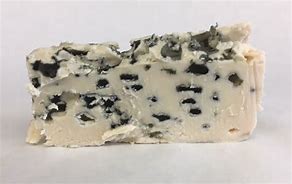Roquefort-Sur-Soulzon, France, 1411
The residents
of the town of Roquefort-Sur-Soulzon are sporting cheesy grins today. King Charles VI has given them exclusive rights to produce their famous smelly cheese. In. an effort to stamp out inferior imitations of the cheese, genuine Roquefort now can only be produced at Roquefort-Sur-Soulzon, being aged in the nearby caves that produce the particular mold that is responsible for this unique cheese.
A similar style
of cheese has been in existence since Roman times. Mention of it can even be found in the writings of the great Roman historian Pliny. The cheese was a particular favorite of the emperor Charlemagne, and a captivating legend surrounds its discovery.
The story
says that a local shepherd once thought he saw a beautiful woman in the distance and left his sheep to pursue her. He also left his lunch of rye bread and cheese in one of the dark caves of the Grotte du Combalou. When he returned some weeks later, sadly without the young woman, the air currents in the cave, combined with the dampness of the rocks, had caused an odd blue mold to grow in streaks along the surface of the ewe’s milk cheese. The shepherd ran down to the village shouting: “It’s a miracle, it’s a miracle.” The people of the town gathered around him, tasted his cheese, and liked it!
Ever since
then the limestone caves of Mount Combalou near Roquefort-Sur-Soulzon have been used for the production of this famous blue cheese. The cheesemakers still use milk from ewes that graze on the Aveyron Plateau. The cheese is white, crumbly, and slightly moist, with distinctive veins of blue mold that produce a sharp tang. It has no rind, and the exterior of the cheese is edible and slightly salty.
Next time you enjoy a piece of that cheese, remember where it came from¨Bon Appetite!
“FRENCH COOKING’S ALL VERY WELL, BUT THEY CAN’T DO A DECENT ENGLISH BREAKFAST.”
quote by: Prince Philip, England
